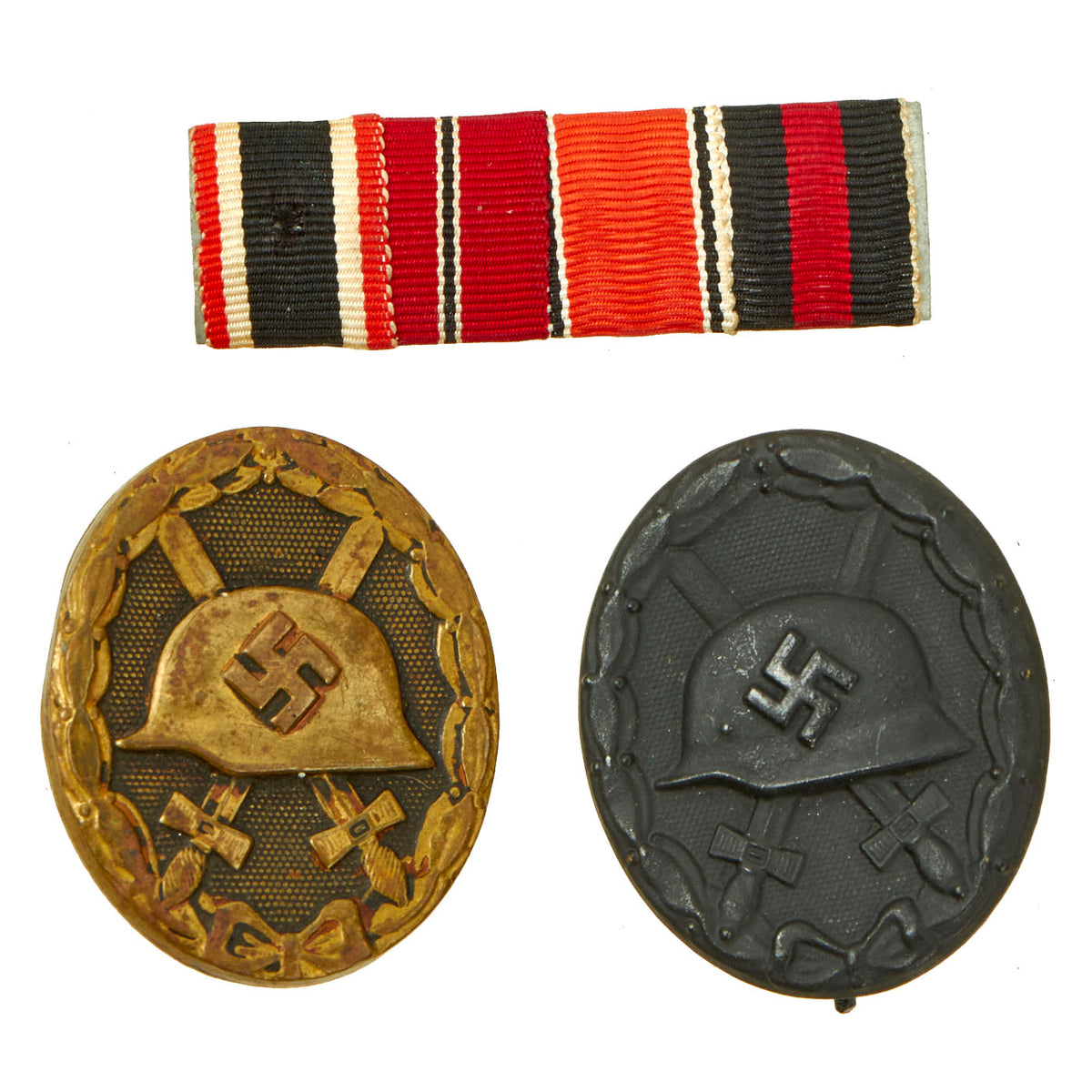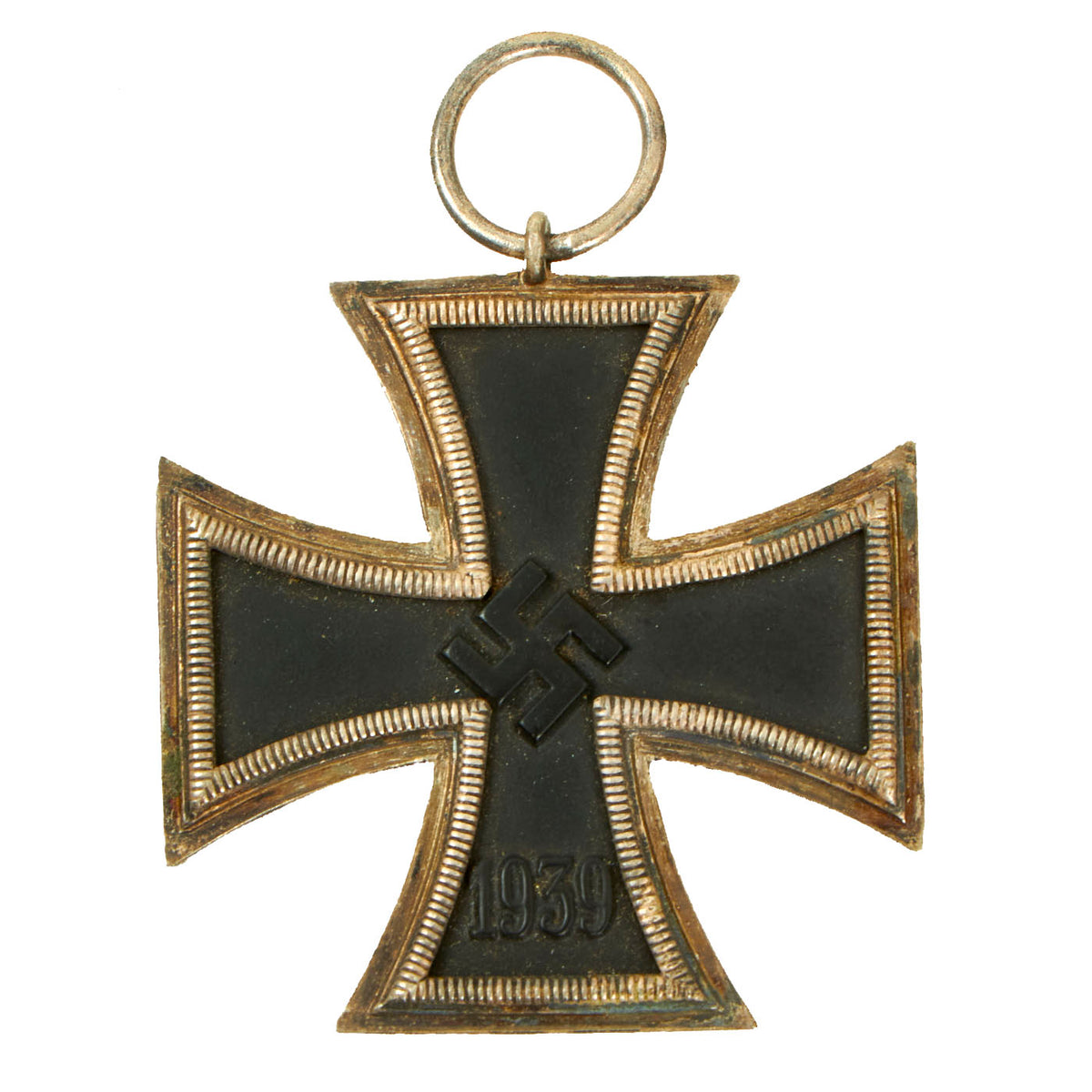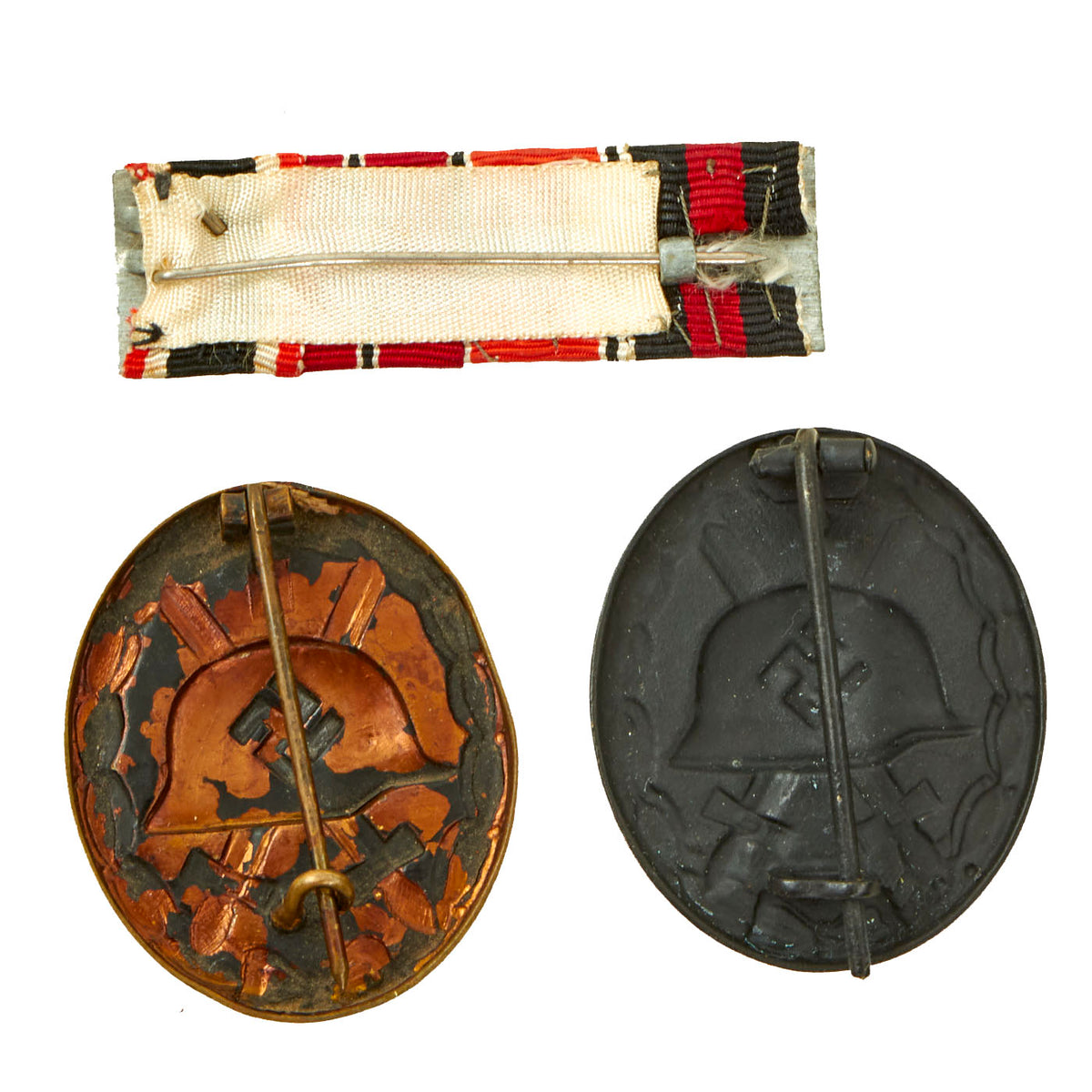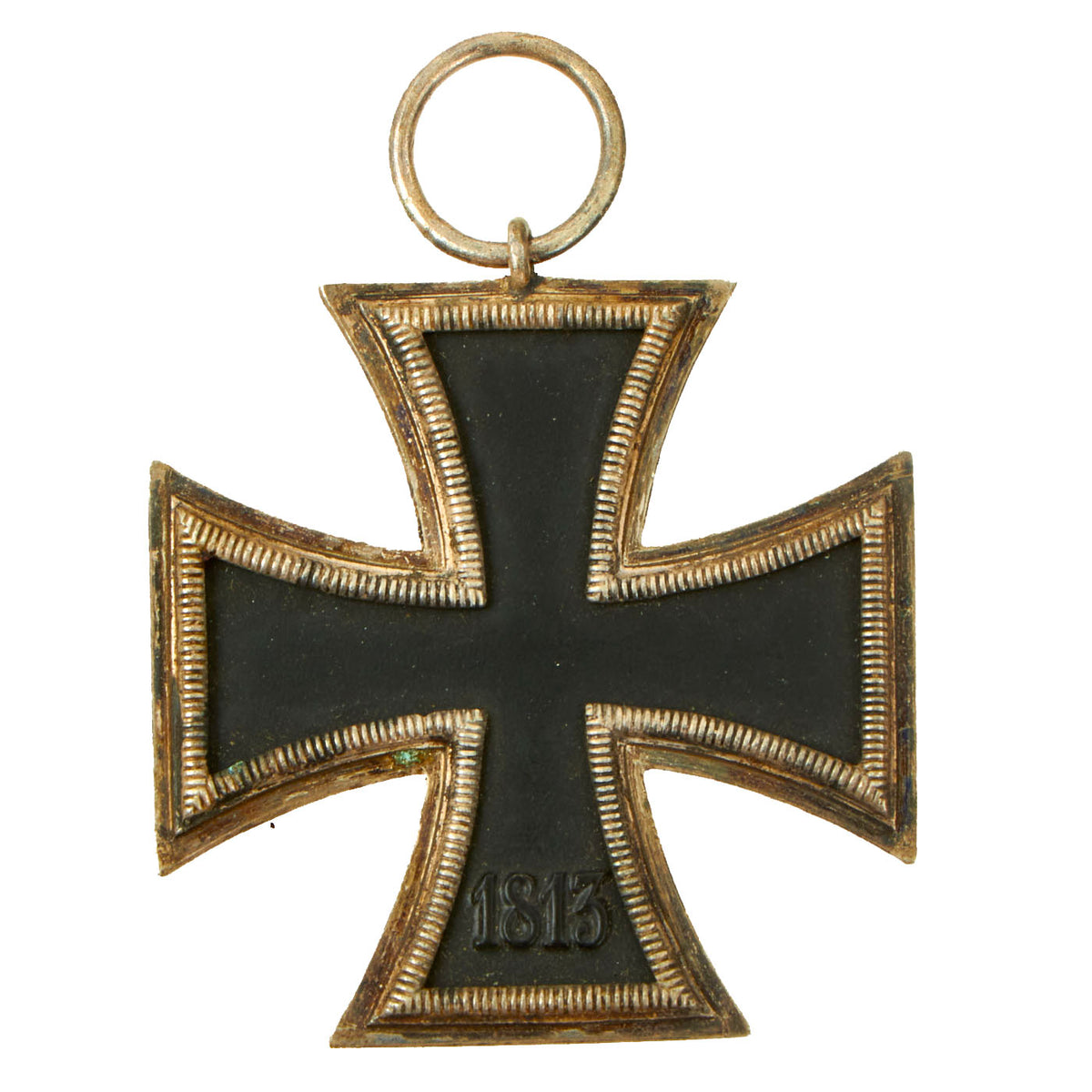Original German WWII Medal and Insignia Lot Featuring 2nd Class Iron Cross – 5 Items Original Items
$ 195,00 $ 78,00
Original Items: Only One of 5 Available. This is a wonderful lot of items which were more than likely brought home by American soldiers at the end of WWII. They are in lovely condition and are perfect for the young collector who is looking to add a variety of medals and insignia to bolster their collections!
The Following Items Are Included:
– 2nd Class Iron Cross: On March 10TH 1813, Prussian King Friedrich Wilhelm III established the Iron Cross as a temporary award for bestowal during times of war. Originally the Iron Cross was introduced in three grades with a Grand Cross intended for award to Senior Commanders for successfully leading troops in combat and the First and Second classes for award to all ranks for bravery or merit in action. The Iron Crosses were reinstituted by King Wilhelm I on July 19TH 1870 for award during the Franco-Prussian War and again on August 5TH 1914, by King Wilhelm II for award during WWI. On September 1ST 1939 AH once more reinstituted the Iron Cross series of awards in the First and Second Classes and established the Knight’s Cross of the Iron Cross. The second class medal was for award to personnel who performed a single act of bravery in combat.
This Iron Cross 2nd Class medal is in very good condition but is without a ribbon.
– x2 Black Wound Badges: The Wound Badge was a German military decoration first promulgated by Wilhelm II, German Emperor on 3 March 1918, which was first awarded to soldiers of the German Army who were wounded during World War I. Between the world wars, it was awarded to members of the German armed forces who fought on the Nationalist side of the Spanish Civil War, 1938–39, and received combat related wounds. It was awarded to members in the Reichswehr, the Wehrmacht, SS and the auxiliary service organizations during World War II. After March 1943, due to the increasing number of Allied bombings, it was also awarded to civilians wounded in air raids. It was awarded when the wound was the result of enemy hostile action. In 1957, the West German government authorized a denazified (Swas removed) version of the basic (black, silver, & gold) badges for wear on the Bundeswehr uniform, among other certain NSDAP-era wartime awards.
The all black one is a reproduction and the second badge is an unmarked original with little of the black paint retained in the recesses of the badge.
– Civil Service Faithful Service 2nd Class Cross for 25 Years of Service: The Civil Service Faithful Service Medal was a NSDAP Germany medal of honor that was founded on 30 January 1938, in two grades, to reward civilians and military in the employ of the German public services for long and faithful service.
All officials, employees, and laborers at any level of the public service (local, regional or national) who complete 25 or 40 years service were eligible.
The second class award was for 25 years of service was a silver cross, with a silver wreath and a black enameled swas in the center of the cross.
The first class award was for 40 years of service was a gold cross, with a gold wreath and a black enameled swast in the center of the cross.
The reverse of both classes was stamped with ‘Für treue Dienste’ (For faithful Services). The ribbon for the medal is cornflower blue.
– Ribbon Bar With Four Ribbons: The awards featured on the ribbon bar is as follows;
– Iron Cross: Adolf H restored the Iron Cross in 1939 as a German decoration (rather than Prussian), and continued the tradition of issuing it in various classes. Legally, it is based on the “Enactment for the re-introduction of the Iron Cross” of 1 September 1939. The Iron Cross of World War II was divided into three main series of decorations with an intermediate category, the Knight’s Cross, instituted between the lowest, the Iron Cross, and the highest, the Grand Cross. The Knight’s Cross replaced the Prussian Pour le Mérite or “Blue Max”. Adolf did not care for the Pour le Mérite, as it was a Prussian order that could be awarded only to officers. The ribbon of the medal (2nd class and Knight’s Cross) was different from the earlier Iron Crosses as the color red was used in addition to the traditional black and white (black and white were the colors of Prussia, while black, white, and red were the colors of NSDAP Germany). Adolf also created the War Merit Cross as a replacement for the non-combatant version of the Iron Cross. It also appeared on certain NSDAP flags in the upper left corner. The sides of the cross were curved, like most original iron crosses.
– Winter Battle in the East 1941–42 Medal: The Eastern Medal, officially the Winter Battle in the East 1941–42 Medal, was a military award of the Wehrmacht which was created by ordinance of Adolf H on 26 May 1942. The Eastern Medal was awarded to any member of the Wehrmacht and Waffen-SS “in recognition of experience in the struggle against the Bolshevik enemy and the Russian winter within the period from 15 November 1941 to 15 April 1942.” It was also awarded posthumously to any service member who died in the line of duty within the Soviet Union. It was wryly called the Frozen Meat Medal or the “Order of the Frozen Flesh”.
– The Anschluss Commemorative Medal: The Anschluss Commemorative Medal was a decoration of NSDAP Germany awarded during the interwar period, and the first in a series of Occupation Medals. Instituted on 1 May 1938, the medal commemorated the annexation of Austria by the German Reich, the so-called Anschluss. German troops crossed the Austrian border on 12 March 1938 without any resistance. The medal, known as the “Anschluss medal”, was awarded to those, both military and civilian, who contributed to or participated in the annexation. This included German State officials and members of the German Wehrmacht and SS who entered Austria. Local NSDAP who had worked for union with Germany also qualified, including the widows of those who had been killed for their cause. Last awarded on 31 December 1940, a total of 318,689 medals were bestowed
The wearing of NSDAP era awards was banned in 1945. The Anschluss medal was not among those awards reauthorized for official wear by the Federal Republic of Germany in 1957.
– Sudetenland Medal: The 1 October 1938 Commemorative Medal, commonly known as the Sudetenland Medal was a decoration of NSDAP Germany awarded during the interwar period, and the second in a series of Occupation Medals.
Instituted on 18 October 1938, the medal was awarded to participants in the occupations of Sudetenland in October 1938 and Czechoslovakia in March 1939.
The medal was awarded to all German State officials and members of the German Wehrmacht and SS who entered the Sudetenland on 18 October 1938, and to Sudeten NSDAP who had worked for union with Germany. Later a special bar for attachment to the ribbon was introduced for participation in the occupation of the remnants of Czechoslovakia on 15 March 1939, and to others who rendered valuable support. Last awarded on 31 December 1940, a total of 1,162,617 medals and 134,563 bars were bestowed.
The wearing of NSDAP era awards was banned in 1945. The Sudetenland medal was not among those awards reauthorized for official wear by the Federal Republic of Germany in 1957.
All items are lovely and come ready to display!
German uniforms of World War II
In the German army there were two kinds of uniform: standard uniforms, which were issued by the Wehrmacht, or from the wearer personally at their own or state-cost tailor-made uniforms.
During the peace period and even during the first year of the war, tailor-made uniforms were often used by officers, but as these were found to be impractical, uncomfortable, and expensive to replace in combat, more and more standard uniforms were used.
The field-gray standard uniform was standardized in the army and consisted of the basic components: steel helmet, side cap, field blouse, covering coat, trousers and march boots.
Mountain troops were given the same uniform, but the side cap was replaced by a mountain cap, as well as the pants and boots by long, baggy trousers with elastic leggings at ankles and mountain boots.
Mounted members of the army were represented not only in the cavalry, but mainly in the mass of the units, which still depended on horses for transport or reconnaissance. These men were given leather riding pants and heavy riding boots.
A special black uniform for the crews of closed combat vehicles was also introduced in 1935. This uniform consisted of a black, padded beret, which also served as a protective helmet, a two-breasted jacket and long baggy trousers.
This uniform, which was worn at first just with the vehicle, was at the same time practical and popular. The black color, which was supplemented by a silver skull insignia on the beret, had a dramatic appearance and added a little to the esprit of the young arm. Thus, from the beginning of 1940, this uniform was issued to the crews of the self-propelled guns in a field-gray version.
In general, the German clothing industry had achieved miracles to keep up with the expansion of the army, and German uniforms were a rare combination of tradition and modernity, comfort and convenience.
Nevertheless, there were not enough uniforms to completely equip the strong-growing German army. This led to the Germans using the captured uniforms of the Austrian, Czechoslovak, and Polish armies. These were sorted, stored, released from the respective national insignia and temporarily issued to German conscripts in order to bridge the deficiency.
Fast Shipping with Professional Packaging
Thanks to our longstanding association with UPS FedEx DHL, and other major international carriers, we are able to provide a range of shipping options. Our warehouse staff is expertly trained and will wrap your products according to our exact and precise specifications. Prior to shipping, your goods will be thoroughly examined and securely secured. We ship to thousands clients each day across multiple countries. This shows how we're dedicated to be the largest retailer on the internet. Warehouses and distribution centres can be located throughout Europe as well as the USA.
Note: Orders with more than one item will be assigned a processing date depending on the item.
Before shipping before shipping, we'll conduct a thorough inspection of the items you have ordered. Today, the majority of orders will be delivered within 48 hours. The delivery time will be between 3-7 days.
Returns
The stock is dynamic and we cannot completely manage it because multiple stakeholders are involved, including our factory and warehouse. So the actual stock may alter at any time. It's possible that you may not receive your order once the order has been made.
Our policy is valid for a period of 30 days. If you don't receive the product within 30 days, we are not able to issue a refund or an exchange.
You can only return an item if it is unused and in the same state as the day you received it. You must have the item in its original packaging.
Related products
Uncategorized
Uncategorized
Uncategorized
Uncategorized
Uncategorized
Uncategorized
Uncategorized
Angolan Rebel 1970s era 60mm Inert Display Mortar from Angolan Civil War Original Items
Uncategorized
Uncategorized
Uncategorized
Uncategorized
Uncategorized
Uncategorized
Uncategorized
Uncategorized
Uncategorized
Uncategorized
Australian WWII Owen MK1 Machine Carbine SMG Custom Fabricated Replica with Sling Original Items
Uncategorized













































































